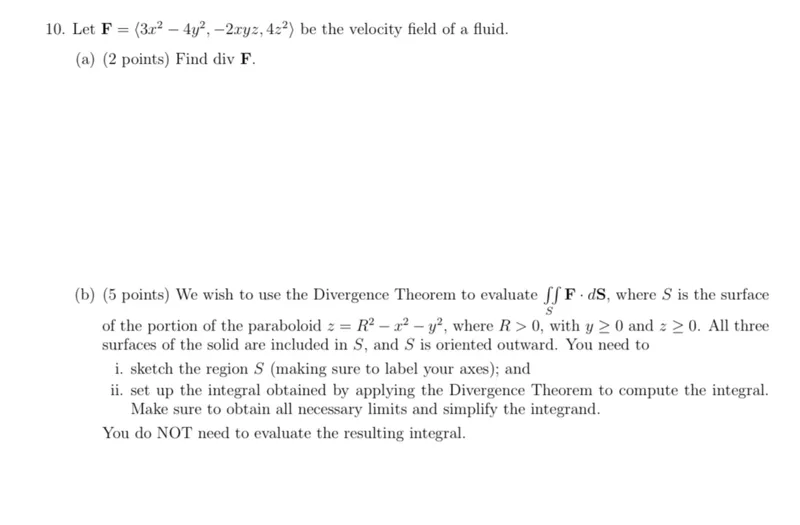Questions: 10. Let F = ⟨3x² - 4y², -2xyz, 4z²⟩ be the velocity field of a fluid. (a) (2 points) Find div F. (b) (5 points) We wish to use the Divergence Theorem to evaluate ∬ₛ F ⋅ dS, where S is the surface of the portion of the paraboloid z = R² - x² - y², where R > 0, with y ≥ 0 and z ≥ 0. All three surfaces of the solid are included in S, and S is oriented outward. You need to i. sketch the region S (making sure to label your axes); and ii. set up the integral obtained by applying the Divergence Theorem to compute the integral. Make sure to obtain all necessary limits and simplify the integrand. You do NOT need to evaluate the resulting integral.

Transcript text: 10. Let $\mathbf{F}=\left\langle 3 x^{2}-4 y^{2},-2 x y z, 4 z^{2}\right\rangle$ be the velocity field of a fluid.
(a) (2 points) Find $\operatorname{div} \mathbf{F}$.
(b) (5 points) We wish to use the Divergence Theorem to evaluate $\iint_{S} \mathbf{F} \cdot d \mathbf{S}$, where $S$ is the surface of the portion of the paraboloid $z=R^{2}-x^{2}-y^{2}$, where $R>0$, with $y \geq 0$ and $z \geq 0$. All three surfaces of the solid are included in $S$, and $S$ is oriented outward. You need to
i. sketch the region $S$ (making sure to label your axes); and
ii. set up the integral obtained by applying the Divergence Theorem to compute the integral. Make sure to obtain all necessary limits and simplify the integrand.
You do NOT need to evaluate the resulting integral.





